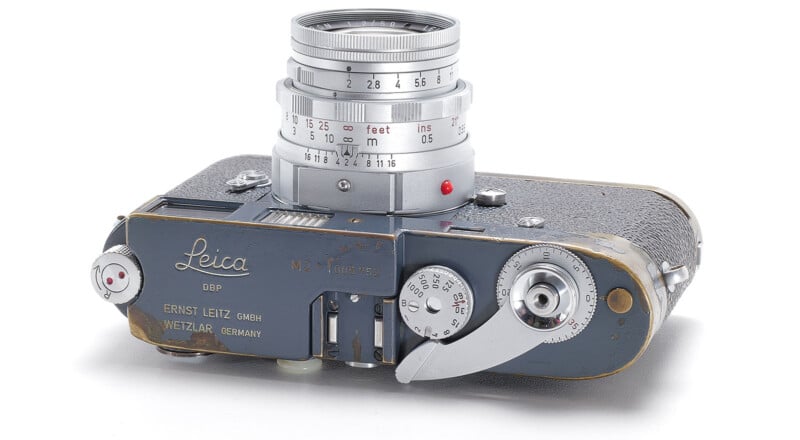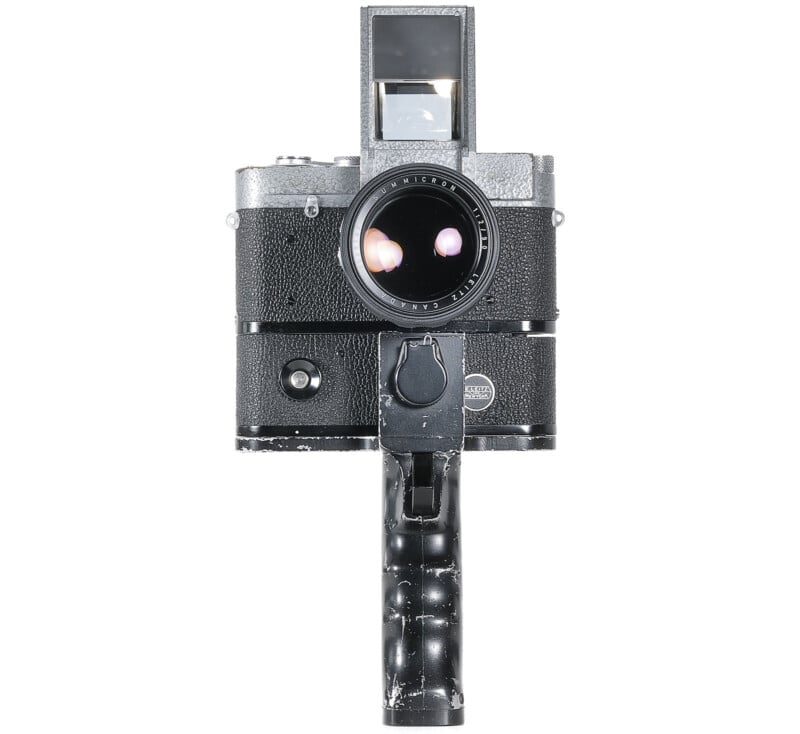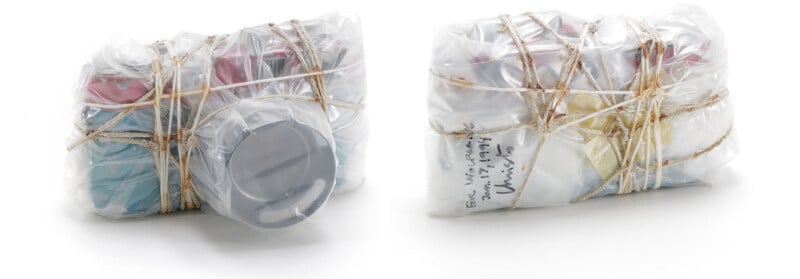![]()
Wetzlar Camera Auctions (WCA) held its sixth auction for historical cameras and accessories last weekend, with nearly 250 lots attracting significant attention from camera collectors and photography enthusiasts. Numerous rare Leica cameras sold for hundreds of thousands of dollars.
WCA selected some auction results to highlight, including some beautiful, rare pieces of photographic history. For example, lot two, a 1924 Leica Model A camera with an Anastigmat lens, sold for 112,500 euros ($122,273). The 100-year-old camera, seen at the top of the article, was produced before Leica’s official market launch the following year, and only the first 150 of these cameras were made with an Anastigmat lens. A century later, there are believed to be only 25 examples of this lens in existence that remain in good condition, per WCA co-owner Lars Netopil.

Another great camera is a prototype Leica IIIc from 1934. This camera, the “first die-cast camera,” according to experts, came from Leica creator Oskar Barnack himself. The prototype camera features a rear door that opens upward and a fold-out rewind crank, two features that didn’t arrive in commercially available Leica cameras until the M3 in 1954 and the M4 in 1967. This prototype that previewed innovations that wouldn’t arrive to customers for decades sold with a final hammer price of 562,500 euros ($611,364).

Other high-value lots include additional prototype models, such as a 1956 Leica IIIg prototype with an internal frame counter that found a new home for 375,000 euros ($407,576) and a Leica M3 prototype that fetched 300,000 euros ($326,061).

Like many other Leica auctions, the sixth Wetzlar Camera Auction featured Leica cameras specially made for military customers. An incredibly rare Leica M2 in gray-blue lacquer finish was manufactured for the United States Air Force in 1960, and one of the mere 20 units produced sold at auction for 325,000 euros ($353,233). Further, an even rarer Leica MS in hammertone gray sold for 562,500 euros ($611,364). Just 10 of these cameras were made for the U.S. Navy during the Cuban Missile Crisis in 1964.


“Compared to the serial production versions, some of the military Leica models were produced in extremely small quantities only. Further, they often were carried out in special finish versions or even in a different construction, due to their special military application,” explains WCA co-owner Jo Geier. “This explains why the Military Leica cameras are a fascinating field for some collectors and why we see exceptionally high prices sometimes achieved in this area.”

While all these cameras are incredible, WCA says the highlight was late famed artist Christo’s “Wrapped Leica.” The camera was once part of Christo photographer Wolfgang Volz’s professional collection. Volz, who was on site for the auction, used the camera to document several of Christo’s artworks officially, and the artist wrapped the camera, in typical Christo fashion, as a gift for his photographer. The wrapped camera then became one of Christo’s most interesting pieces itself. The wrapped Leica sold for 212,500 euros ($230,960).
“For us, to have a Leica camera that is same an item for camera collectors as well as an important piece in the art market, was something entirely new. We are extremely happy that with a sales price of EUR 212,500 this piece went for well the double of its estimate,” says Netopil.

Beyond these cameras, numerous Leica lenses were also auctioned, including a very early Leica M lens from 1949 that sold for 175,000 euros ($190,202). A sample unit Leica APO-Summicron 50mm ASPH. lens for Leica’s RED collaboration started at just 12,000 euros before skyrocketing to 375,000 euros ($407,576) following an exciting bidding war.

Besides Leica cameras and lenses, there were offerings made by other companies, too. A rare Leningrad space camera with a pair of matching lenses sold for 42,500 euros ($46,192), for example.

“Space is a field fascinating to many collectors. Besides the Hasselblad space cameras used by NASA, the cameras from the former Soviet space programs are exceedingly rare. If they turn up for sale at auction, always very high prices can be expected,” says Jo Geier.
The complete sixth auction catalog is available on the Wetzlar Camera Auctions website and the company is already accepting consignments for its next auction on October 11, 2025.
Image credits: Photos provided by Wetzlar Camera Auctions
